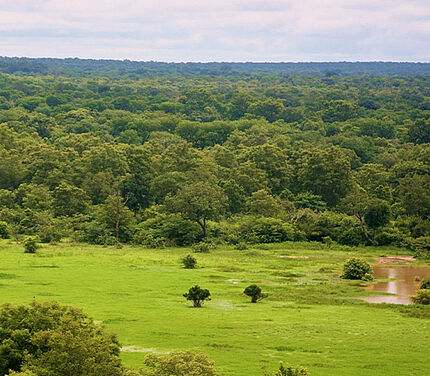AFRICA
Ghana
Area: 238,533 km²
Geography: In Ghana, mostly low plains dominate the terrain, while there is a dissected plateau in the south-central area. The overall climate is tropical. While it is warm and comparatively dry along the southeast, the southwest region is hot and humid and the north mostly dry. (CIA, 2019)
Land Degradation: Ghana has 35% of its land under threat of desertification. As a result of land degradation, grasslands, woodlands and forests are being lost while natural water bodies are drying up due to prolonged droughts and sedimentation of water courses. The annual cost of land degradation in Ghana is estimated at USD 1.4 billion. This is equal to 6% of the country's GDP. (UNU, 2017) (UNCCD, 2018)
Sustainable Land Management: Ghana is keen to drive investments in sustainable land management and achieve national and international commitments such as the 2 million hectare restoration commitment under AFR100. The returns on taking action against land degradation practices are estimated at 5 USD for every dollar invested in restoring degraded land in Ghana. (UNCCD, 2018)

ELD ACTIVITIES
-
Case study (2020)
Title: The Case for Farmer Managed Natural Regeneration (FMNR) in the Upper West Region of Ghana
Content: This study makes the case for Farmer Managed Natural Regeneration (FMNR) in the upper west region of Ghana.
Publication: January 2020
Report: EN
Policy Brief: EN
Fact sheet: EN FR
-
Capacity Building (2017-2020)
Within the Regreening Africa project, jointly implemented with the World Agroforestry Centre (ICRAF), the ELD Initiative is conducting trainings on the total economic valuation of terrestrial ecosystems and their services. Trainings are complemented by practical exercises as part of the ongoing research within the country.
CONTACT
ELD Secretariat
E-Mail: info@eld-initiative.org
